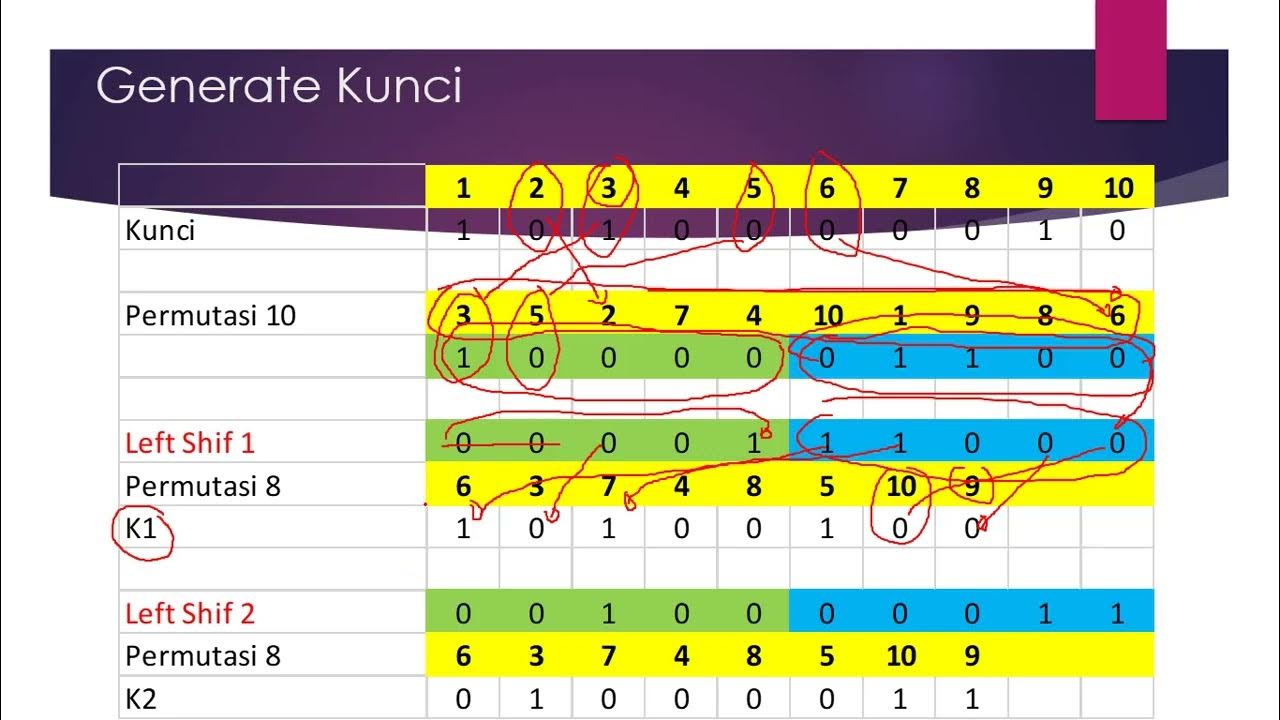RSA Algorithm - How does it work? - I'll PROVE it with an Example! -- Cryptography - Practical TLS
Summary
TLDRThis video provides an in-depth explanation of the RSA encryption algorithm, focusing on its key concepts and mathematical foundations. RSA, developed by Rivest, Shamir, and Adelman in 1977, uses a pair of commutative keys for encryption and decryption. The video covers essential terms such as prime numbers, semiprimes, and modulo, before walking through the steps of generating RSA keys, encrypting and decrypting messages, and demonstrating the algorithm's commutative property. The security of RSA is highlighted through the difficulty of factoring large semiprime numbers, ensuring robust encryption. The tutorial concludes with a demonstration of RSA's real-world applications in securing digital communication.
Takeaways
- 😀 RSA (Rivest-Shamir-Adleman) is an asymmetric encryption algorithm created in 1977, widely used for secure communication.
- 🔐 RSA uses a pair of commutative keys: a public key for encryption and a private key for decryption.
- 🔢 RSA's key generation involves selecting two prime numbers, multiplying them to get a modulus (n), and calculating the totient (φ(n)).
- 🔑 The public key must be a prime number less than the totient and cannot be a factor of the totient.
- 🔒 The private key must satisfy the equation (e * d) mod φ(n) = 1, ensuring proper encryption and decryption with public and private keys.
- 💬 RSA is commutative, meaning you can encrypt with the public key and decrypt with the private key, or encrypt with the private key and decrypt with the public key.
- 🔍 The security of RSA depends on the difficulty of factoring large semiprime numbers, which are products of two primes.
- 📊 RSA uses large prime numbers to generate semiprimes that are computationally difficult to factor, ensuring security even with very large numbers.
- 💡 RSA's encryption and decryption process is demonstrated through simple numbers, but in practice, much larger numbers are used for stronger security.
- 🏆 RSA Labs conducted a challenge in 1991 to factor large semiprimes, offering substantial cash rewards, which highlighted the strength of RSA's security.
- 🔢 Modern RSA implementations use keys of 1024 bits or more, making it nearly impossible to factor these numbers with current technology.
Q & A
What does RSA stand for and who created it?
-RSA stands for Rivest-Shamir-Adelman, named after the three mathematicians who created the algorithm in 1977: Ronald Rivest, Adi Shamir, and Leonard Adleman.
What is the main feature of RSA encryption?
-RSA encryption is an asymmetric encryption algorithm that uses a pair of communicative keys, where one key is used for encryption and the other for decryption. The keys can be used in any order, making it commutative.
What is the difference between RSA and other asymmetric encryption algorithms like Diffie-Hellman and the Digital Signature Algorithm?
-RSA is unique because it creates a commutative set of keys, meaning encryption and decryption can happen in either order. Other algorithms like Diffie-Hellman and the Digital Signature Algorithm do not have this commutative property.
Why is the mathematical explanation of RSA presented in the video?
-The mathematical explanation is presented to demonstrate the commutative property of RSA encryption, showing how RSA allows encryption with one key and decryption with another, and vice versa.
What is a prime number and how is it different from a semiprime number?
-A prime number is a number divisible only by 1 and itself. A semiprime number is a product of two prime numbers. For example, 21 is a semiprime because it is the product of the prime numbers 3 and 7.
What does the term 'modulo' mean in RSA encryption?
-'Modulo' refers to the remainder when one number is divided by another. For example, 13 mod 5 equals 3 because when you divide 13 by 5, the remainder is 3.
How is the public key generated in RSA?
-The public key is generated by first selecting two prime numbers, multiplying them together to get 'n', and then selecting a number 'e' that is a prime, less than the totient of 'n', and not a factor of the totient.
What is the condition that must be met to select a valid private key in RSA?
-The private key must satisfy the condition that when multiplied by the public key, the result modulo the totient must be 1. This ensures that the encryption and decryption processes are mathematically related.
What does the encryption process involve in RSA?
-To encrypt a message in RSA, you raise the message to the power of the public key 'e' and then calculate the remainder when divided by 'n' (the product of the two prime numbers).
Why is RSA considered secure?
-RSA's security relies on the difficulty of factoring large semiprime numbers, which are the product of two large prime numbers. As the size of the semiprime increases, it becomes exponentially harder to factor, ensuring the encryption's security.
Outlines

Этот раздел доступен только подписчикам платных тарифов. Пожалуйста, перейдите на платный тариф для доступа.
Перейти на платный тарифMindmap

Этот раздел доступен только подписчикам платных тарифов. Пожалуйста, перейдите на платный тариф для доступа.
Перейти на платный тарифKeywords

Этот раздел доступен только подписчикам платных тарифов. Пожалуйста, перейдите на платный тариф для доступа.
Перейти на платный тарифHighlights

Этот раздел доступен только подписчикам платных тарифов. Пожалуйста, перейдите на платный тариф для доступа.
Перейти на платный тарифTranscripts

Этот раздел доступен только подписчикам платных тарифов. Пожалуйста, перейдите на платный тариф для доступа.
Перейти на платный тарифПосмотреть больше похожих видео

Kriptografi Algoritma RSA #kriptografi #kriptografialgoritma

MATDIS - Aplikasi Ilmu Teori Bilangan 2 ( RSA ) - Diana MR - UMM

How prime numbers protect your privacy #SoME2

Algoritma S DES

Digital Signature Algorithm (DSA) - Cryptography - Practical TLS

Algoritma K-Means Analisis Cluster pada Data Mining Part 2
5.0 / 5 (0 votes)
